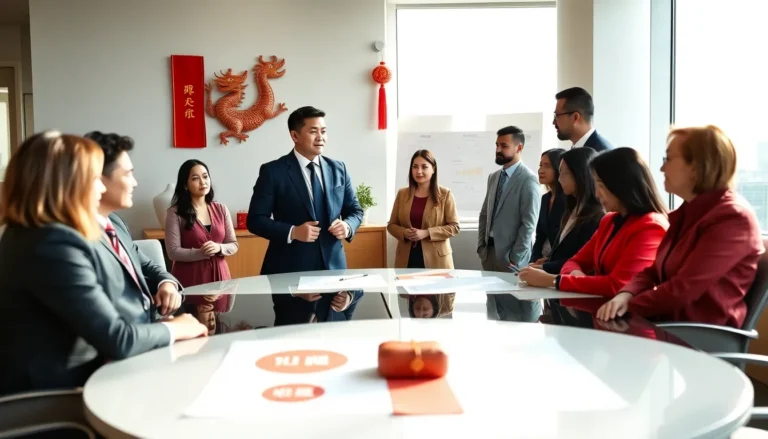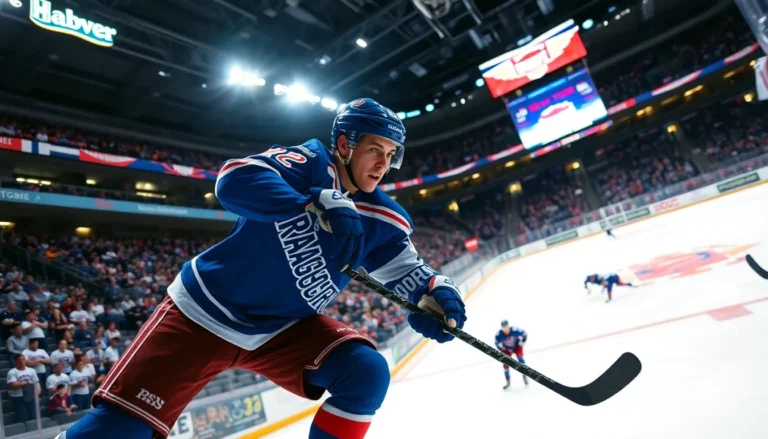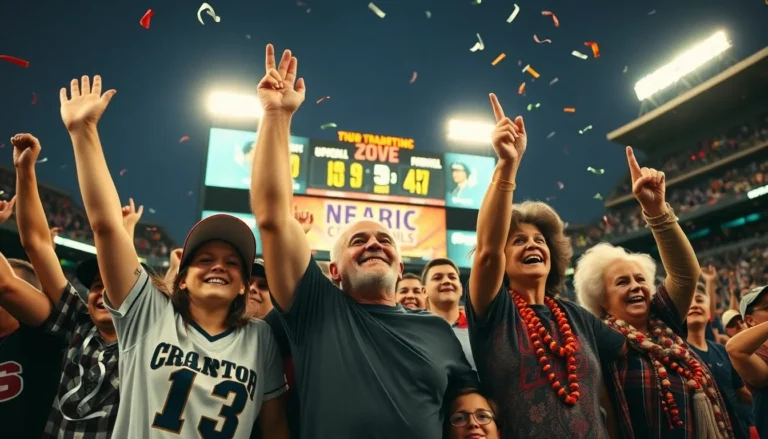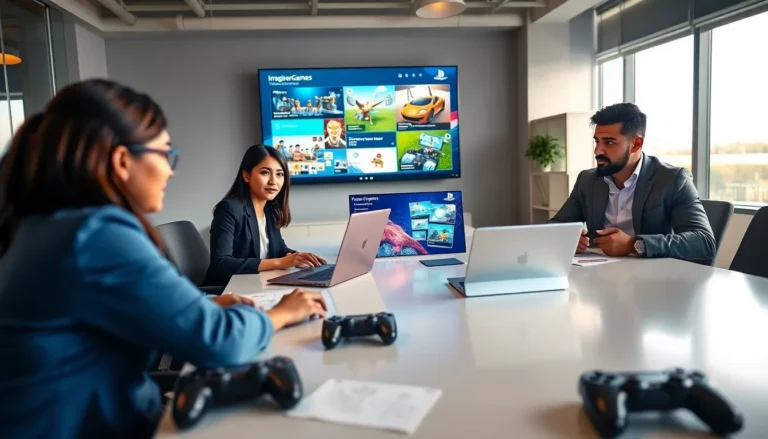Table of Contents
ToggleIn the fast-paced world of competitive first-person shooters, every millisecond counts. One moment you’re a hero racking up headshots, and the next, you’re that guy who forgot to check his corners. If you want to climb the ranks and avoid the dreaded “noob” label, it’s time to sharpen those skills and unlock your full potential.
Understanding Competitive FPS Games
Competitive first-person shooter (FPS) games demand precision, quick reflexes, and strategic thinking. These games pit players against each other in fast-paced environments where reaction time often means the difference between victory and defeat. Skill development remains crucial as every millisecond influences gameplay.
Players must grasp the mechanics of the game and the specific roles within the team. Knowing the map layouts, objectives, and character abilities leads to better decision-making. Understanding weapon mechanics, including recoil patterns and damage statistics, can elevate gameplay significantly.
Communication ranks as another key element. Successful teams rely on effective communication to coordinate strategies. Inputting specific game-related information, like enemy locations or resource availability, enhances teamwork.
Players should also focus on their mental state. Maintaining a calm mindset under pressure can improve their performance. Stress and frustration often lead to making mistakes, which players must actively work to mitigate.
Competitive FPS games include various titles, each with unique elements. Games like “Counter-Strike: Global Offensive” focus heavily on teamwork, while “Call of Duty” caters to aggressive playstyles. A player’s choice of game affects their approach and techniques.
To refine skills, consistent practice plays a vital role. Engaging in custom matches or training modes allows players to hone their reflexes without high-stakes pressure. Tracking progress through matches provides insights into strengths and weaknesses.
Analytics tools can offer valuable feedback. By reviewing gameplay, players identify mistakes and explore areas for improvement. Armed with data-driven insights, players can adapt their strategies.
Understanding these elements forms the foundation for thriving in competitive FPS games. Aspiring players need to prioritize skill enhancement, effective communication, and mental resilience to succeed.
Essential Skills for Competitive Play
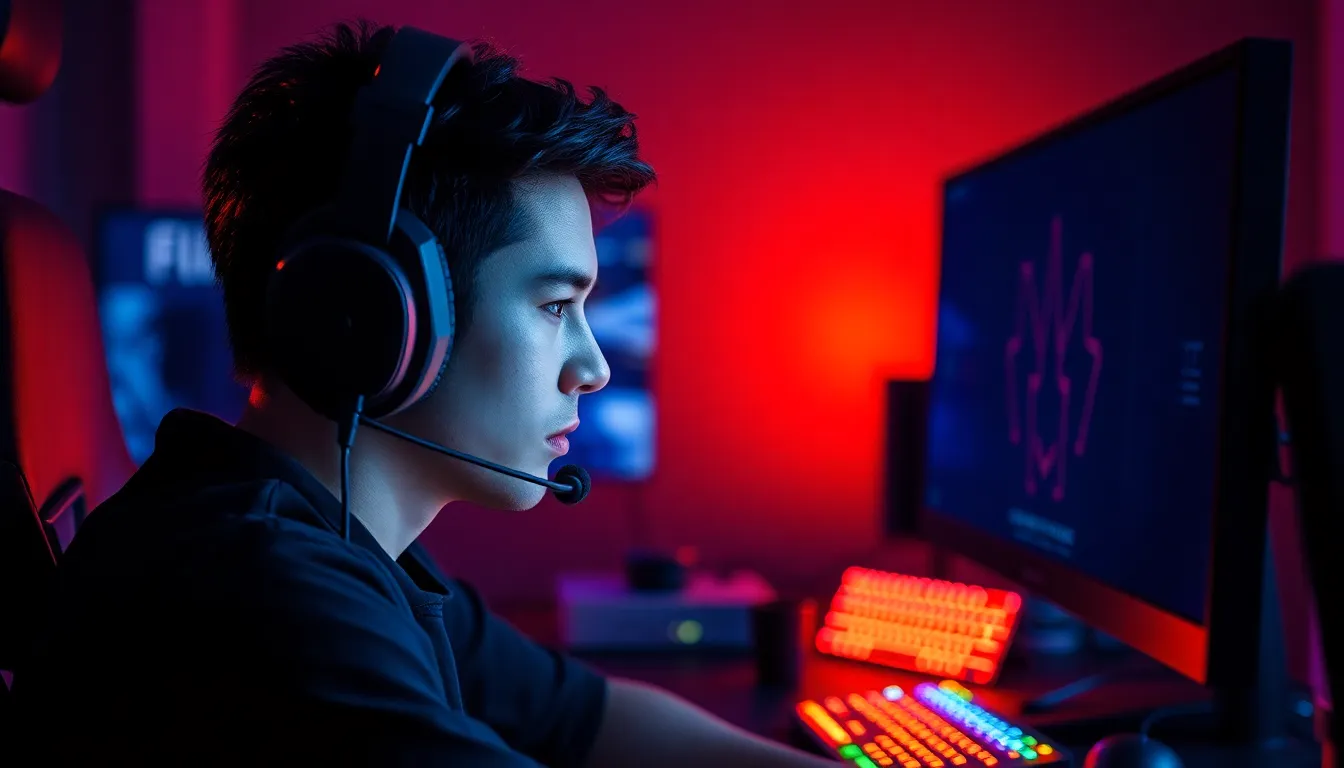
Competitive play requires mastering essential skills. Players must focus on aiming techniques and movement strategies to enhance their performance.
Aiming Techniques
Precision stands at the core of effective aiming. Utilizing sensitivity settings that complement individual comfort helps achieve accuracy. Players often practice tracking moving targets to refine their skill. Additionally, methods like flick shots can increase reaction speed during engagements. Techniques such as spray control foster familiarity with weapons, encouraging players to manage recoil. Regular training in aim training software or custom maps ensures ongoing skill development. Each player should find a rhythm in their aiming style, adjusting as necessary to outplay opponents.
Movement Strategies
Effective movement enhances survivability and position advantages. Staying unpredictable complicates enemy targeting, making it easier to evade fire. Strafing, crouch-jumping, and using cover strategically maintain agility. Players should implement quick bursts of movement to confuse opponents. Additionally, knowing map layouts allows players to traverse environments efficiently. Using sound cues from footsteps or gunfire helps anticipate enemy locations and movements. Experimentation with different movement techniques during practice rounds leads to smoother transitions in competitive matches.
Game Sense and Awareness
Game sense and awareness significantly enhance performance in competitive FPS games. Effective players understand their environment and anticipate possible enemy actions.
Map Knowledge
Mastering map layouts is essential for gaining tactical advantages. Identifying key areas, choke points, and potential ambush spots helps players navigate effectively. Players should take time to study maps, noting possible paths and cover locations. Understanding sightlines and verticality can turn the tide in a match. Memorizing spawn points aids in predicting enemy movements. Each facet of the map can impact player strategies, so consistent practice on various maps is necessary.
Enemy Predictability
Reading enemy behavior improves gameplay outcomes. Recognizing patterns in movement and firing habits helps players make informed decisions. Experienced players observe enemy positioning and react accordingly, often anticipating the opponent’s next move. Utilizing sound cues, like footsteps or weapon reloads, provides crucial information. Players who analyze when enemies are likely to strike can exploit openings more effectively. Adapting to enemy tendencies contributes to a strategic edge, enabling players to preemptively counter threats.
Communication and Teamwork
Effective communication plays a vital role in competitive FPS gameplay. Players should clearly convey information, using voice chat or in-game features to relay enemy positions, strategies, or acquired resources. A concise call-out helps teammates make swift decisions, especially in high-pressure situations.
Teamwork significantly enhances the chances of victory. Collaborating strengthens individual performance, leading to improved coordination and strategizing. Designating specific roles, such as support, sniper, or front-line attacker, ensures that everyone understands their responsibilities during matches.
Listening actively further promotes teamwork. Players who pay attention to teammates can adjust their tactics, support each other, and capitalize on opportunities. Encouraging open dialogue fosters trust, leading to a more cohesive team dynamic.
Utilizing in-game communication tools enhances coordination. Many FPS titles include features like map pinging or pre-set strategies, which help teams maintain situational awareness. Effective use of these tools allows for seamless planning and real-time adjustments.
Staying positive during matches can foster a better environment. Encouragement and recognition of teammates’ efforts contribute to morale. Teams that uplift each other tend to outperform those that succumb to frustration or negativity.
Players should engage in post-match discussions to analyze the team’s performance. Reviewing teamwork dynamics can reveal strengths and areas needing improvement. Constructive feedback fosters growth, benefiting players and the team as a whole.
Incorporating all these elements leads to improved gameplay effectiveness. Attention to communication, clear roles, active listening, effective tool utilization, positivity, and post-match analysis collectively enhance teamwork in competitive FPS environments. Prioritizing these aspects ultimately elevates player performance and team success.
Gear and Setup
Proper gear and setup significantly impact competitive FPS performance. Selecting the right equipment enhances gameplay experience.
Choosing the Right Equipment
Prioritize a high-quality gaming mouse with adjustable DPI settings for precise aiming. Invest in a mechanical keyboard for responsive key presses, which aids in faster reactions. Use a monitor with a high refresh rate, ideally 144 Hz or higher, ensuring smoother visuals. A reliable headset enhances spatial awareness by providing directional sound cues. Customize gear based on personal preferences, ensuring comfort during extended gaming sessions. Testing equipment before committing helps identify the best fit for individual needs.
Optimizing Settings
Adjust in-game sensitivity to match personal comfort levels for better control. Lowering sensitivity might improve precision while higher sensitivity can enhance reaction speed. Tweak graphics settings for optimal performance, prioritizing frame rates over visual quality if necessary. Enable features like V-Sync or anti-aliasing to enhance gameplay smoothness. Customize keybindings, ensuring intuitive access to critical commands. Regularly revisiting these settings after updates or changes is essential for maintaining competitive edge.
Mastering competitive FPS games requires dedication and a multifaceted approach. Players must focus on refining their skills through consistent practice and effective communication. Understanding game mechanics and maintaining a calm mindset can significantly enhance performance in high-pressure situations.
Additionally, the right gear and optimized settings play a crucial role in achieving peak performance. By prioritizing these elements and adapting to the unique demands of each title, players can elevate their gameplay and outmaneuver their opponents. Embracing a growth mindset and fostering teamwork will ultimately lead to success in the competitive FPS landscape.


